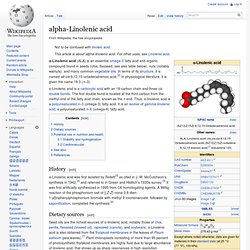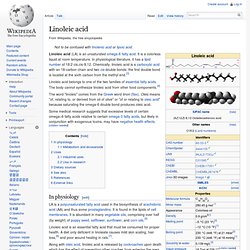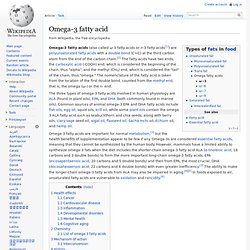

17 Reasons You Need More Omega-3s in Your Diet. Stroke is the fourth leading cause of death in the U.S., and 80% of strokes are preventable.

In addition to the hundreds of studies showing that omega-3s are heart-healthy, several studies suggest that they may play a role in preventing stroke. Stroke is considered a “brain attack,” meaning that a blood vessel to the brain is blocked or breaks, both of which lead to brain damage. Omega-3s help reduce several of the controllable risk factors of stroke, which include high cholesterol, high blood pressure, diabetes and atherosclerosis. According to a Harvard Public Health study, older adults with the highest blood levels of omega-3s had a lower risk of dying of a coronary event, like a heart attack or stroke.
Study: Omega-3s can lengthen live by 2.2 years. DHA. Docosahexaenoic acid (DHA) is an omega-3 fatty acid that is a primary structural component of the human brain, cerebral cortex, skin, sperm, testicles and retina.

It can be synthesized from alpha-linolenic acid or obtained directly from maternal milk or fish oil.[1] DHA's structure is a carboxylic acid (-oic acid) with a 22-carbon chain (docosa- is Greek for 22) and six (hexa-) cis double bonds (-en-);[2] with the first double bond located at the third carbon from the omega end.[3] Its trivial name is cervonic acid, its systematic name is all-cis-docosa-4,7,10,13,16,19-hexa-enoic acid, and its shorthand name is 22:6(n-3) in the nomenclature of fatty acids. Cold-water oceanic fish oils are rich in DHA. Most of the DHA in fish and multi-cellular organisms with access to cold-water oceanic foods originates from photosynthetic and heterotrophic microalgae, and becomes increasingly concentrated in organisms the further they are up the food chain. Central nervous system constituent[edit] EPA. EPA and its metabolites act in the body largely by their interactions with the metabolites of arachidonic acid; see Essential fatty acid interactions for detail.

Eicosapentaenoic acid (EPA or also icosapentaenoic acid) is an omega-3 fatty acid. In physiological literature, it is given the name 20:5(n-3). It also has the trivial name timnodonic acid. ALA. Α-Linolenic acid (ALA) is an essential omega-3 fatty acid and organic compound found in seeds (chia, flaxseed, see also table below), nuts (notably walnuts), and many common vegetable oils.

In terms of its structure, it is named all-cis-9,12,15-octadecatrienoic acid.[2] In physiological literature, it is given the name 18:3 (n−3). α-Linolenic acid is a carboxylic acid with an 18-carbon chain and three cis double bonds. The first double bond is located at the third carbon from the methyl end of the fatty acid chain, known as the n end. Thus, α-linolenic acid is a polyunsaturated n−3 (omega-3) fatty acid. It is an isomer of gamma-linolenic acid, a polyunsaturated n−6 (omega-6) fatty acid. History[edit] α-Linolenic acid was first isolated by Rollett[3] as cited in J. Dietary sources[edit] Potential role in nutrition and health[edit] Linoleic acid. Linoleic acid (LA) is an unsaturated omega-6 fatty acid.

It is a colorless liquid at room temperature. In physiological literature, it has a lipid number of 18:2 cis,cis-9,12. Chemically, linoleic acid is a carboxylic acid with an 18-carbon chain and two cis double bonds; the first double bond is located at the sixth carbon from the methyl end.[3] Linoleic acid belongs to one of the two families of essential fatty acids.
The body cannot synthesize linoleic acid from other food components.[4] The word "linoleic" comes from the Greek word linon (flax). Some medical research suggests that excessive levels of certain omega−6 fatty acids relative to certain omega-3 fatty acids, but likely in conjunction with exogenous toxins, may have negative health effects. Omega-6 fatty acid. Omega-3 fatty acid. Omega-3 fatty acids (also called ω-3 fatty acids or n-3 fatty acids[1]) are polyunsaturated fatty acids with a double bond (C=C) at the third carbon atom from the end of the carbon chain.[2] The fatty acids have two ends, the carboxylic acid (-COOH) end, which is considered the beginning of the chain, thus "alpha", and the methyl (CH3) end, which is considered the "tail" of the chain, thus "omega.

" The nomenclature of the fatty acid is taken from the location of the first double bond, counted from the methyl end, that is, the omega (ω-) or the n- end. The three types of omega-3 fatty acids involved in human physiology are ALA (found in plant oils), EPA, and DHA (both commonly found in marine oils). Omega-3 fatty acids are important for normal metabolism,[3] but the health benefits of supplementation appear to be few if any.
Omega-3s are considered essential fatty acids, meaning that they cannot be synthesized by the human body. Health effects[edit] Cancer[edit] Inflammation[edit] Essential fatty acid. Essential fatty acids, or EFAs, are fatty acids that humans and other animals must ingest because the body requires them for good health but cannot synthesize them.[1] The term "essential fatty acid" refers to fatty acids required for biological processes but does not include the fats that only act as fuel.

Only two fatty acids are known to be essential for humans: alpha-linolenic acid (an omega-3 fatty acid) and linoleic acid (an omega-6 fatty acid).[2][3] Some other fatty acids are sometimes classified as "conditionally essential," meaning that they can become essential under some developmental or disease conditions; examples include docosahexaenoic acid (an omega-3 fatty acid) and gamma-linolenic acid (an omega-6 fatty acid). When the two EFAs were discovered in 1923, they were designated "vitamin F", but in 1929, research on rats showed that the two EFAs are better classified as fats rather than vitamins.[3] Functions[edit] In the body, essential fatty acids serve multiple functions.